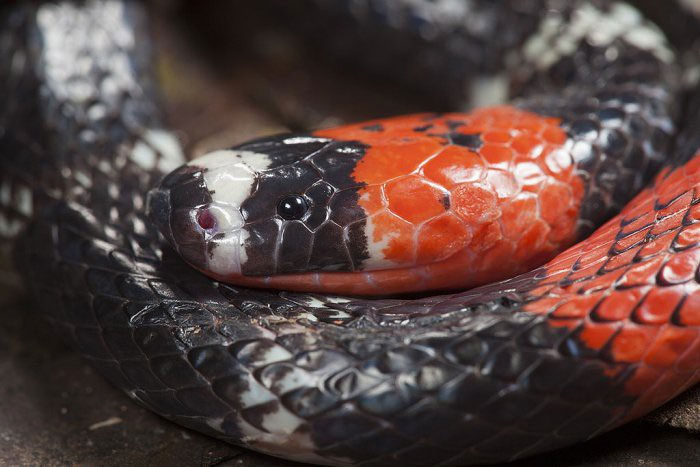Find a new snake, but no one can find it
The place to find new snakes surprises both viewers and the scientific community.
Earth still has many unknown species, so finding a new creature though important but not too surprising.
But like the recently announced snake, it is different. Because where science finds it . inside the belly of another snake.
Specifically, experts from the University of Texas at Arlington (USA) in the "autopsy" of a Central American coral snake (Micrurus nigrocinctus) found the body of another snake with an undetermined identity. received in human biological history.
But the special thing is the corpses of that coral snake, which was captured by July 7, 1976, by a palm farmer, Julio Ornelas-Marti'nez, in the forest of Cerro Baúl (Peru). It has been preserved for more than 40 years, only to wait until someone pecks out its stomach and finds the new snake.

Coral snakes.
It is known that the coral snake found by Ornelas-Marti'nez has a vivid color and a strong dead venom, and is famous for hunting other snakes. Initially, the scientists cut the snake's abdomen and found a few strange points, but they did not include the report that decided to preserve the snake, sent to the museum for further research. And then it took more than 40 years for people to touch it, and discovered the new snake.
According to Jonathan A. Cambell, author of the study, the new snake was named Cenaspis aenigma - Latin, meaning "mysterious dinner". Cambell said the snake has a few distinct characteristics compared to most other species today. First, the tail does not branch, forming a large array. Its genitals and skull shape are also quite strange.
Cenaspis is not a large snake. It is only about 25cm long, and seems to spend most of the day hiding underground - based on the elongated shape of the skull.
Of course, there are still many questions that can only be answered when researchers actually observe them in real life.

Their colors are nothing special, only light brown.
"Their colors are nothing special, just light brown," Cambell wrote in the report. "This little color and pattern is not uncommon for earth-dug snakes. However, it also has some special features, such as a series of rectangular black and triangular spots, forming three vertical stripes. long body ".
"The reason why this snake has such a strange pattern is still a big question mark. It's not like any snake in Central America."
Moreover, common earth-dug snakes only hunt soft-bodied prey, such as slugs or earthworms. But with Cenaspis, it possesses teeth that are more suitable for tougher prey, like beetles, giant centipedes .
If this is really a digging snake, it is not difficult for it to escape from the eyes of researchers. But if not, the question is: do they still exist, since no one has seen them since 1976.
The study was published in Herpetology.
- Greedy snake snakes tried to swallow snake but failed
- To what extent is the red-tailed snake snake?
- Strange is the snake 'Satan' appeared in Vietnam
- Snake and custom of worship of Vietnamese people
- Snake poisoned two heads crawled into American houses
- Brown snake bites the skull swallowing the cobra after the death war
- The venomous snake sees the dried branches in Vietnam
- The world's most poisonous snakes
- The hair-raising story about giant snake
- The 10 rarest snakes of the planet are about to be extinct
- Find serum to treat all snake bites for the poor
- Discover new bizarre snake ghosts in Madagascar
 Animal 'suffering' after hibernation
Animal 'suffering' after hibernation Why do goats climb well?
Why do goats climb well? Scientists were surprised to see chimpanzees eating turtles
Scientists were surprised to see chimpanzees eating turtles Giant catfish died deadly due to drought in Thailand
Giant catfish died deadly due to drought in Thailand